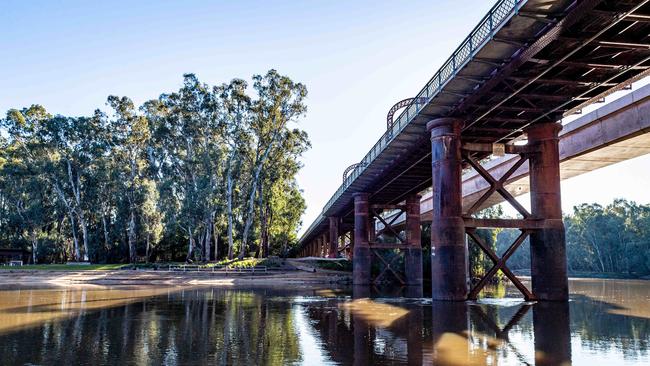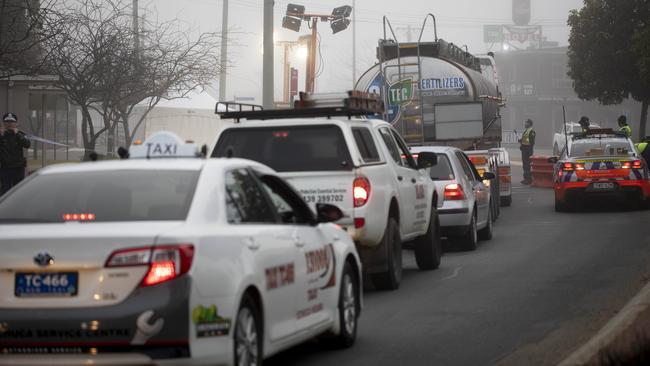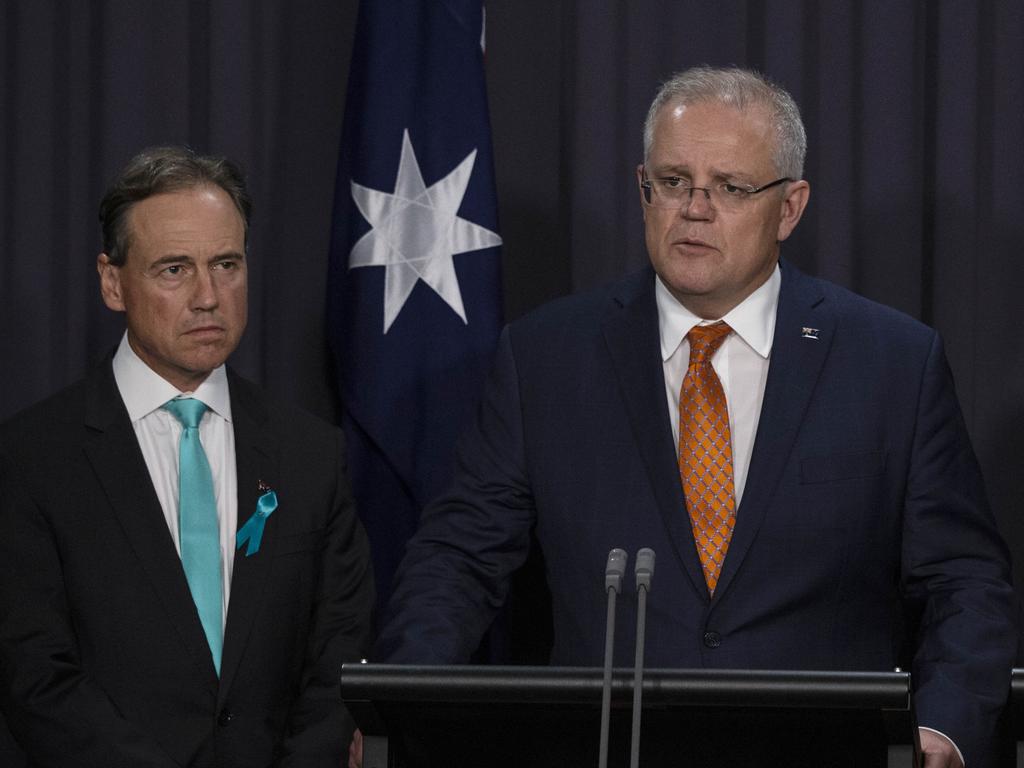Coronavirus drives many to flee Melbourne’s ring of steel
For the first time in a decade, the bush and the beach are the envy of the city and after a punishing stretch in the Victorian capital, an exodus may be afoot.

The last recession triggered net migration loss from Victoria over four consecutive years to June 1994 before easing. There have been similar net-migration losses from other states at various times. In most cases the losses were offset by natural increase (excess of births over deaths).
Nevertheless the sudden outflow of locals to another state, or indeed from the capital city to the regions, reduces demand for housing in the place of departure and boosts demand in the place of arrival. A shift in net migration from positive to negative is the product of locals voting with their feet.
South Australia endured a decade of net migration loss following the collapse of the state bank in 1990. Western Australia experienced net migration losses for three consecutive years to June 2018 following the collapse of the mining boom.
NSW has a long history of ins and outs when it comes to net migration: workers were drawn to the state in the late 1990s prior to the 2000 Olympics and then “released back” contributing, I think, to several years of a post-Olympics malaise for Sydney.
Queensland is the Australian version of a global phenomenon (in the Western world) known as the sunbelt drift: the Sunshine state always wins-out in the cross-border shuffle of Aussies. There is nothing particularly unusual about this. Americans drift from cold New York to sunny Miami. The Brits are apt migrate to warmer Cornwall or even further afield to places like Spain’s Costa Brava. We Australians head for Queensland.
Given these migratory trends it is possible, in fact I would say it is highly likely, that Victoria will again experience net migration loss. Or, at the very least, there will be net migration loss from Melbourne to regional Victoria. However tracking population movement is a rear-vision mirror exercise: there’s a six-month delay between the reference period — say the September quarter — and the March publication of net migration movements by the Australian Bureau of Statistics.
In the meantime, housing markets rise and fall as locals shift and shuffle from one place to another. At the last recession there was a three-year time lag between the kick-off (such as the collapse of Pyramid Building Society in July 1990) and peak net-migration loss from Victoria over the 12 months to June 1994.
This time round I suspect that the demographic impact, a likely outflow from Melbourne and Victoria, will surface closer to kick-off (say, from the April-onwards lockdowns), leading to a peak net migration loss in the year to June 2021. But we won’t get official confirmation that this trend is even underway until March or maybe June next year. What is required is a lead indicator to see whether a Melbourne exodus is likely once the lockdown is removed.
I think I might have an answer to that question.
In a collaboration with property research group Ripehouse Advisory, I have accessed residential property settlement metadata for each state and territory by local government area. This requires a bit of explaining so bear with me.
On the left-hand side of this table I show the top local government areas in Australia ranked by growth in the number of residential property settlements recorded between February 2019 and February 2020. This ranking shows rising demand for residential property in the month prior to the start of the coronavirus lockdowns.
The behemoth City of Brisbane leads the way with 241 net extra property settlements (probably purchased in December 2019) in February this year when compared with the number recorded in February last year.
Then come other residential property purchase hot spots; these are places where Australians increasingly wanted to live, or invest, in the month prior to the coming of the coronavirus.
Sixteen of the top 20 local government areas are located in Sydney, Melbourne, Brisbane and Canberra. Just four are located in regional Australia and these are mostly within commuting distance of capital cities namely the Gold Coast, Wollongong and Geelong.
On the right-hand side of this table, I show Australia’s top local government areas using the same methodology seven months later in September.

The greatest increase in residential property settlements in September 2020 as compared with September 2019 was recorded in the City of Central Coast (includes Gosford & Wyong) north of the Hawkesbury River. Technically the Central Coast is part of metropolitan Sydney in much the same way that the Mornington Peninsula is part of Melbourne. Clearly, as soon as the pandemic arrived Sydneysiders snapped up bolthole properties on the Central Coast.
More importantly the table shows a switch in property settlements from largely capital city to largely regional locations, and especially NSW regional locations, throughout the year.
The residential property purchase hot spots by September were less inclined to cluster in Sydney (as had been the case in February) but were far more likely to be located in the seachange communities of the Central Coast, the Mid-Coast (Forster-Tuncurry), Port Macquarie, Shoalhaven (Nowra), Port Stephens, Byron and Clarence Valley (Yamba).
There is a growing movement towards regional NSW as the pandemic persists and which, I think, has implications for what is in store for Melbourne once that city’s “ring of steel” is relaxed.
Consider that there are 520 local government areas on the Australian continent. In February this year roughly 33,000 residential properties were bought and sold. By September, however, this number had increased to 46,000 but which was 17,000 down on the same month the previous year reflecting a drop of 27 per cent. (This year has been a tough time to be a real estate agent.) However in some municipalities sales activity for September exceeded sales activity for September last year.
In addition to the Central Coast and other seachange towns on the NSW coast cited above, there has been a surge in residential sales activity in key regional centres such as Tamworth, Maitland, Bathurst, Orange, Cessnock and Armidale. The lifestyle community of Wingecaribee Shire (includes Bowral) just outside Sydney was also popular.
Only two places outside NSW make the Top 20 residential sales places: Perth’s outer suburban Wanneroo and the beachside community of Mandurah.
It’s almost as if something is propelling Sydneysiders outwards towards to the coast and to the regions. That something is the coronavirus. I think this is evidence of a flee-the-city movement welling up in capital cities, where city-types are buying up treechange and seachange properties.
Indeed these are Virus Escapees Seeking Provincial Australia otherwise known as the VESPAs who are right now scootering up the M1 in search of a bit of a seachange
The thing with the VESPA movement is that it doesn’t take much of a shift from a city like Sydney to impact local markets like The Entrance, Port Macquarie and Nowra.
And if this is happening in Sydney and regional NSW, then why wouldn’t this also happen in Melbourne and regional Victoria? There is already a well-established long-term movement of people from the city to seachange and treechange communities around Melbourne.
But if I am correct, and Melburnians are driven by the same values and much the same capacities as Sydneysiders, then we might soon see a cavalcade of VESPAs scootering down the Geelong Freeway, up the Hume Highway, out the Calder in desperate search of a bolthole, a Bonnie-Doon of a safe place, far from the crowds, the congestion and the contagion of the troubled Victorian capital.
Victorians fled their state in the early 1990s. Melburnians escaped the city amid the pandemonium of the 1890s depression. Tear down that ring of steel and VESPA-inclined Melburnians will be revving their engines in anticipation of getting to the space and the freedom that lies just beyond the Little River BP Services Centre.
It raises the question of whether there is a goldilocks zone beyond the city that will support the VESPA lifestyle which may require travelling back to a city workplace once a week or fortnight. I suspect that zone in a Victorian context extends between say 80km and 200km contained by places like Apollo Bay, Echuca and Wilson’s Promontory.
But there is more to this coastal and regional shift than a progressive recovery in housing demand in the lifestyle towns of NSW throughout 2020. Sure the pandemic has been a major driver but there are other factors. Many of the east-coast’s regions received drought-busting rains in January and February; they’re greening, they’re growing, they’re rebuilding local economies creating jobs and attracting cashed-up city-types in the process
Plus, the coming of the coronavirus largely affected Australia’s biggest cities — Melbourne especially — but has only lightly touched the regions. For the first time in a decade (or more) the bush has been the envy of the city. This situation fleetingly applied during the resources boom when it comprised city-types flying in and flying out. This time the envy is for the essence of a country or coastal lifestyle.
Indeed, in Australia, the 2020s may well usher in a new relationship between the city and the regions unlocked by the work-from-home movement, by broadband access, kicked along by the summer rains and bushfire recovery spending, and now hurried along by the city’s new-found appreciation of the safety and the quietude of a country lifestyle.
Melbourne VESPAs and others, you may start your engines.
Bernard Salt is managing director of The Demographics Group; research by Hari Hara Priya Kannan Data Scientist The Demographics Group, Will Farrell Ripehouse Advisory







Australians are remarkably fluid when it comes to shifting and shuffling around the Australian continent and especially during recessionary times. We’re very much inclined to move to places of opportunity and/or of lifestyle and especially when pursuing our penchant for a bit of a treechange or seachange.